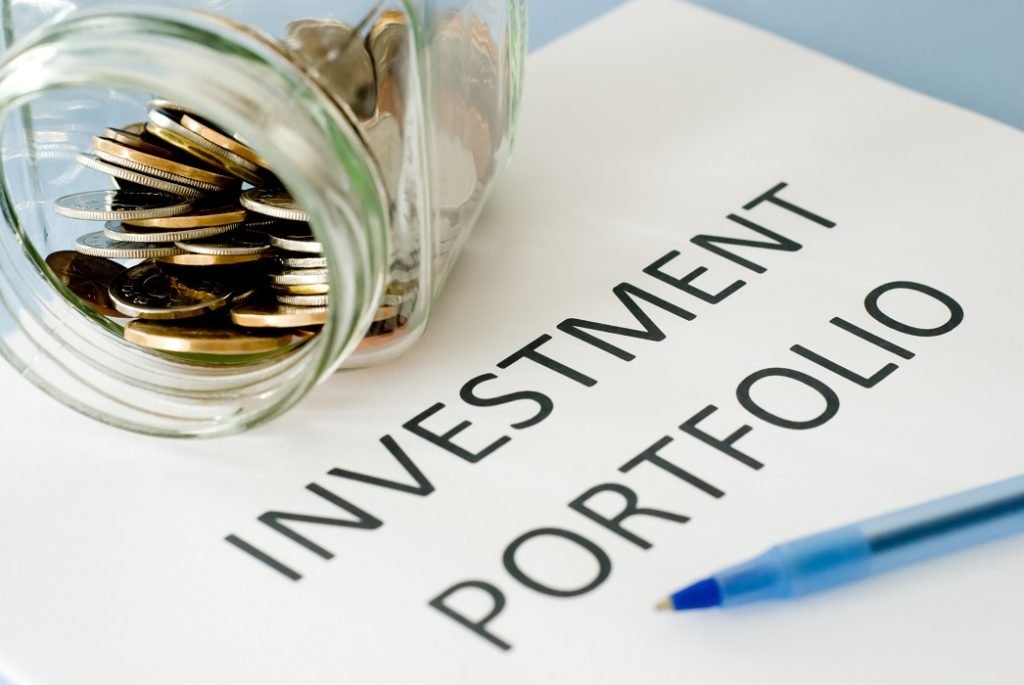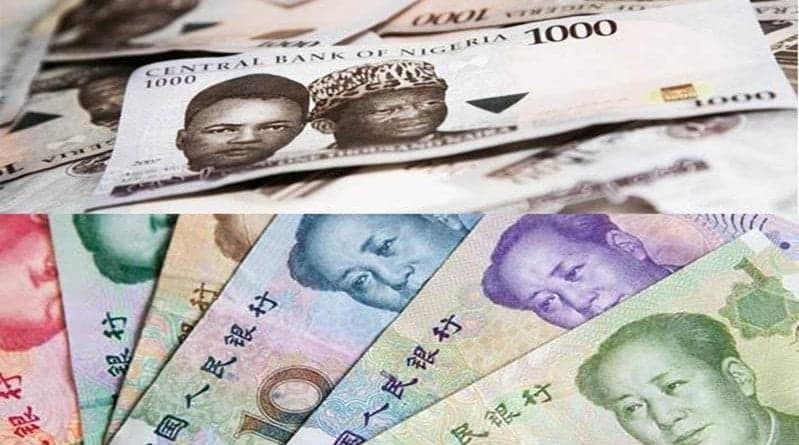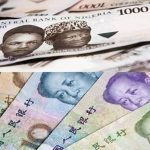Economy
How to Build an Investment Portfolio

By FBNQuest
Every investor who desires to build and grow wealth should have an investment portfolio. Wealth creation efforts are less likely to succeed if they are approached haphazardly, so building an investment portfolio is a great way to add the necessary strategy and intention to these efforts.
An investment portfolio, simply defined, is a collection of all the assets an investor owns. It can be likened to a roof under which you house all your investments. A good investment portfolio will be diversified and contain a wide variety of assets such as stocks, bonds, mutual funds, real estate, fine art, gold etc.
Types of Investment Portfolios
There are five major types of investment portfolios and they are built by taking the financial goals and risk appetite of the investor into consideration.
The Aggressive Portfolio – This type of portfolio is specially designed for investors with a high tolerance for risk. Investments that fall under this category are high risk but also have the potential to yield high returns. High beta stocks are an example of this kind of asset. They are more volatile and experience a greater fluctuation in price when compared to the overall market.
The Defensive Portfolio – This category is for people who have a low-risk appetite. Building a defensive portfolio usually involves investing in stocks of companies that will stay in business no matter what. These are companies that make products that are important for everyday survival.
The Income Portfolio – The goal of an income portfolio is to generate positive cash flow. This includes stocks that pay regular dividends and provide a steady source of income for the investor. An income portfolio can serve as a great supplement to an investor’s salary or retirement income.
The Speculative Portfolio – This portfolio is also tailored to an investor with a high-risk tolerance. It basically involves pre-empting which stocks are likely to do well. An example of speculative investment is an initial public offering (IPO) of a new tech company. Financial advisors usually advise investors against putting more than 10 per cent of their investment funds into such assets.
The Hybrid Portfolio – The hybrid portfolio, as the name implies, is a combination of different assets. This portfolio encourages diversification and provides the investor with a diversified portfolio which can include stocks, mutual funds, bonds, commodities, real estate, and even art. This portfolio category comes with the advantage of flexibility for the investor; it also reduces the negative impact of losses from one asset class.
How to start building an investment portfolio
Building an investment portfolio can seem like an uphill task, but it does not have to be. The first step is to identify your financial goals. As Bloomberg financial analyst and Chief Investment Officer of Ritholtz Wealth Management LLC, Barry Ritholtz aptly points out: “When it comes to investing, there is no such thing as a one-size-fits-all portfolio.”
Identifying your unique goals will determine if your money should go into short-term or long-term investments. It will also predict what kind of portfolio would be best suited to your needs. A portfolio tailored towards retirement will be different from one that is intended to provide income within the next five years.
It is also important to assess your risk tolerance. If you are risk-averse, this means you are careful about putting your money at risk for promising rewards. Therefore, your money should be invested as safely and predictably as possible. However, if you have a high tolerance for risk, you are open to taking risks for the possibility of making greater returns.
Once this is completed, you would need to honestly examine your investing skills, to establish whether you can build a portfolio yourself or would require the support of a Financial Adviser.
The next step is to decide on asset allocation. How much of your money will go into each investment? How do you plan to balance your portfolio and continue to diversify as time goes on? These are all questions that must be answered and it’s advisable to seek the help of a professional for this stage of the process.
In conclusion, the major keys to keep in mind when building an investment portfolio are to identify your goals, assess your risk appetite and talk to an expert. Ready support is available to you, as FBNQuest offers a variety of investment products and is available to offer advice to investors based on their risk appetite.
Economy
CSCS, Geo-Fluids, FrieslandCampina Lift NASD OTC Bourse by 0.62%

By Adedapo Adesanya
Three bellwether stocks lifted the NASD Over-the-Counter (OTC) Securities Exchange by 0.62 per cent on Friday, December 12 with the NASD Unlisted Security Index (NSI) jumping by 22.20 points to 3,600.43 points from 3,578.23 points.
In the same vein, the market capitalisation of the trading platform increased by N13.28 billion to close at N2.154 trillion from the previous day’s N2.140 trillion.
During the session, Central Securities Clearing System (CSCS) Plc went up by N2.53 to close at N39.71 per share compared with the previous day’s N37.18 per share, Geo-Fluids Plc added 35 Kobo to its price to finish at N5.00 per unit versus Thursday’s closing price of N4.65 per unit, and FrieslandCampina Wamco Nigeria Plc appreciated by 23 Kobo appreciation to sell at N60.23 per share versus N60.00 per share.
It was observed that yesterday, the price of Golden Capital Plc went down by N1.05 to N9.45 per unit from N10.50 per unit, and UBN Propertiy Plc declined by 21 Kobo to N2.01 per share from the N2.22 per share it was traded a day earlier.
There was a significant improvement in the level of activity for the day, as the volume of transactions increased by 6.2 per cent to 37.4 million units from the previous day’s 35.2 million units, the value of trades went up by 265.1 per cent to N4.9 billion from N1.4 billion, and the number of deals soared by 13.80 per cent to 33 deals from 29 deals.
Infrastructure Credit Guarantee Company (InfraCredit) Plc ended the last trading day of this week as the most active stock by value on a year-to-date basis with 5.8 billion units valued at N16.4 billion, the second spot was taken by Okitipupa Plc with 178.9 million units traded for N9.5 billion, and third space was occupied by a new comer in MRS Oil Plc with 36.1 million units worth N4.9 billion.
InfraCredit Plc also finished the session as the most active stock by volume on a year-to-date basis with 5.8 billion units transacted for N16.4 billion, followed by Industrial and General Insurance (IGI) Plc with 1.2 billion units valued at N420.3 million, and Impresit Bakolori Plc with 537.0 million units sold for N524.9 million.
Economy
Guinness Nigeria, Others Buoy NGX Index 1.00% Growth

By Dipo Olowookere
The bullish run on the Nigerian Exchange (NGX) Limited continued on Friday with a further 1.00 per cent growth buoyed by gains recorded by Guinness Nigeria, Champion Breweries, and others.
Data showed that the consumer goods space expanded by 1.53 per cent during the last trading session of the week, as the insurance counter grew by 0.51 per cent, and the industrial goods sector marginally gained 0.01 per cent.
However, the banking index depreciated by 0.54 per cent due to a pocket of profit-taking, and the energy industry shrank by 0.09 per cent, while the commodity sector closed flat.
Guinness Nigeria gained 10.00 per cent to trade at N217.80, Morison Industries rose by 9.84 per cent to N4.69, Champion Breweries jumped by 9.69 per cent to N14.15, Austin Laz grew by 9.66 per cent to N2.27, and C&I Leasing appreciated by 9.62 per cent to N5.70.
Conversely, eTranzact lost 10.00 per cent to finish at N12.60, Chellarams slumped by 9.00 per cent to N13.20, Eunisell depleted by 9.89 per cent to N75.15, Africa Prudential moderated by 9.77 per cent to N12.00, and DAAR Communications decreased by 9.18 per cent to 89 Kobo.
The busiest stock on Friday was Access Holdings with 107.6 million units sold for N2.2 billion, Consolidated Hallmark traded 59.9 million units worth N245.8 million, Zenith Bank transacted 48.2 million units valued at N3.1 billion, Transcorp Power transacted 42.8 million units for N13.1 billion, and Champion Breweries exchanged 36.4 million units valued at N510.2 million.
At the close of business, a total of 602.8 million units worth N30.7 billion exchanged hands in 20,550 deals yesterday, in contrast to the 529.7 million units valued at N12.3 billion traded in 18,159 deals on Thursday, representing a surge in the trading volume, value, and number of deals by 13.80 per cent, 149.59 per cent, and 13.17 per cent apiece.
Business Post reports that the All-Share Index (ASI) soared during the session by 1,485.89 points to 149,436.48 points from 147,950.59 points and the market capitalisation moved up by N945 billion to N95.264 trillion from N94.319 trillion.
Economy
Naira Chalks up 0.11% on USD at NAFEM as CBN Defends Market

By Adedapo Adesanya
An intervention of the Central Bank of Nigeria (CBN) in the foreign exchange (FX) market eased the pressure on the Naira on Friday.
The apex bank sold forex to banks and other authorised dealers in the official window to defend the domestic currency, helping to calm the FX demand pressure, with the Nigerian currency appreciating against the US Dollar in the Nigerian Autonomous Foreign Exchange Market (NAFEM) by 0.11 per cent or N1.57 to sell at N1,454.50/$1 compared with Thursday’s closing price of N1,456.07/$1.
Also, the domestic currency improved its value against the Pound Sterling in the official market yesterday by N3.95 to close at N1,946.15/£1 versus the previous day’s N1,950.11/£1 but lost 10 Kobo on the Euro to quote at N1,706.46/€1 compared with the N1,706.36/€1 it was exchanged a day earlier.
At the black market segment, the Nigerian Naira maintained stability against the Dollar during the session at N1,470/$1 and also traded flat at N1,463/$1 at the GTBank forex counter.
Despite the sigh of relief, demand pressures outweighed the robust supply from the CBN and inflow from offshore players looking to participate at the OMO bills auction.
Gross FX reserves increased for the twenty fifth consecutive week, growing by a strong $396.84 million week-on-week to $45.44 billion.
As for the cryptocurrency market, it was down on Friday as pressure remained after Federal Reserve chair Jerome Powell’s speech on Wednesday, which hinted at a possible rate cut pause in January. As a result, markets now expect only two rate cuts in 2026 instead of three.
However, Chicago Federal Reserve President Austan Goolsbee, who was against a December rate cut, said he expects more in 2026 than the current median projection.
Ethereum (ETH) slumped by 5.1 per cent to $3,090.61, Solana (SOL) declined by 4.5 per cent to $132.79, Cardano (ADA) depreciated by 3.8 per cent to $0.4103, and Dogecoin (DOGE) dropped 2.5 per cent to trade at $0.1373.
In addition, Bitcoin (BTC) lost 2.4 per cent to sell at $90,342.74, Litecoin (LTC) tumbled by 1.9 per cent to $81.86, Binance Coin (BNB) fell by 0.6 per cent to $886.93, and Ripple (XRP) slipped by 0.5 per cent to $2.02, while the US Dollar Tether (USDT) and the US Dollar Coin (USDC) traded flat at $1.00 each.
-

 Feature/OPED6 years ago
Feature/OPED6 years agoDavos was Different this year
-
Travel/Tourism9 years ago
Lagos Seals Western Lodge Hotel In Ikorodu
-

 Showbiz3 years ago
Showbiz3 years agoEstranged Lover Releases Videos of Empress Njamah Bathing
-

 Banking7 years ago
Banking7 years agoSort Codes of GTBank Branches in Nigeria
-

 Economy3 years ago
Economy3 years agoSubsidy Removal: CNG at N130 Per Litre Cheaper Than Petrol—IPMAN
-

 Banking3 years ago
Banking3 years agoFirst Bank Announces Planned Downtime
-

 Banking3 years ago
Banking3 years agoSort Codes of UBA Branches in Nigeria
-

 Sports3 years ago
Sports3 years agoHighest Paid Nigerian Footballer – How Much Do Nigerian Footballers Earn












